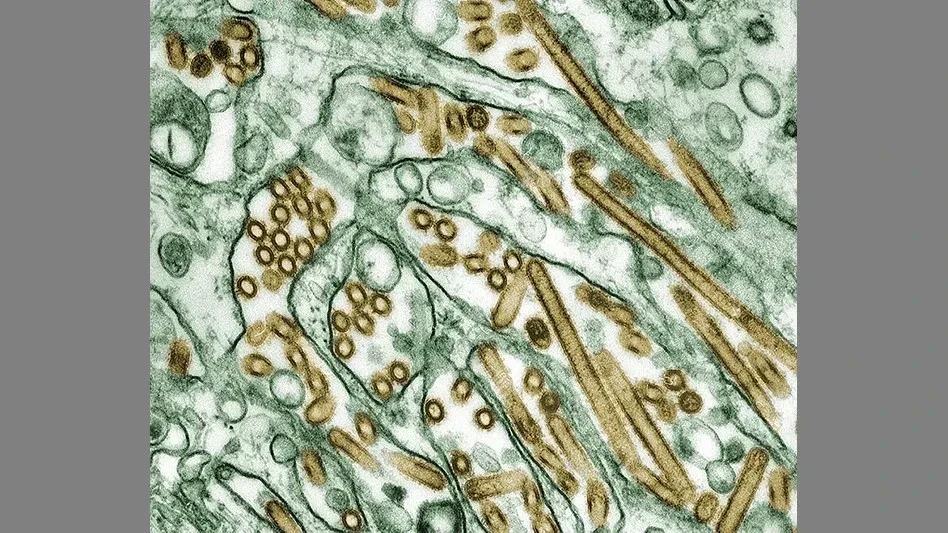Who Would Harm Your Product?
"Although it is difficult to imagine why someone would intentionally harm food products, there are many cases of tampering in the United States and around the world." So begins the section "Aggressors at Your Plant" in the first chapter of The AIB Guide to Food Security authored by Lance Reeve and Paul Stevenson and published by AIB International, Manhattan, Kan. But even more difficult for most of us to fathom is the statement later in the chapter that states, "Most security professionals agree that critical security threats usually come from within a facility … from disgruntled employees or even vendors or contractors with facility access."
One aspect of a food security program, the guide explains, is identification of possible aggressors at your plant, those who purposely harm or contaminate food products. The guide divides such aggressors into five categories and provides examples for each:
* Criminals – a trained or untrained person with the purpose of harming the product, facility or people. This person generally has a well-planned attack, based on monitoring of your plant and its regular activity, and may even go to the extent of payment for uniforms, insider access, etc. Such criminals are often sophisticated, organized and experienced, and target valuable assets. Other criminals, however, may be unsophisticated, unorganized and inexperienced, with more interest in targets with little risk.
Example: (2003) Poisoning of products at a supermarket chain. A criminal laced several of a supermarket chain’s products with cyanide, then sent extortion letters to the company demanding $500,000. With several consumers victimized by the poisoning, the case made media headlines and the chain’s name appeared on the front page of the newspaper.
* Protestors – Persons or groups, motivated by political issues or acting out of frustration, discontent or anger, using the incident to gain publicity for their cause. Extremist groups in the area of a plant should be closely monitored as they may go as far as violence or destruction.
Example: (1984) Salmonella typhimurium poisoning of a salad bar in Oregon by a religious cult, which affected more than 750 people. The cult’s goal was to sway that day’s county election by causing an illness outbreak.
* Terrorists – Small, well-organized groups motivated by a particular belief, political cause or issue with which they disagree. With well-planned, sophisticated attacks, often funded by wealthy individuals or a government opposed to U.S. policies, the terrorists’ goal is generally death, destruction, theft or publicity, and they are usually willing to face any risk, including death, for their cause. These cases can be the most difficult to predict or prevent.
Example: The September 11th attacks of 2001, in which the terrorists’ intention was to strike fear into the public.
* Subversives – Spies and saboteurs who target personnel, equipment or operations for destruction or even death; this category would include persons with legitimate access to a product. These small groups generally use chemical or physical agents already in the plant or attack through theft of sensitive information or documents, thus good food security programs and policies can limit their actions.
Example: In 2003 a baker stole the uniform of a competitor, enabling him to gain access wherein he stole binders containing more than $30 million worth of proprietary recipes.
* Rogue or Disgruntled Insiders – An unhappy employee or person inside the production process, and often having a history of mental illness, who acts with little or no planning to serve his or her own interests. Because these insiders are usually the most difficult group to detect, a good security program includes training of employees and supervisors to notice signs of a disgruntled employee and encouragement for sharing of any suspicions with supervisors.
Example: (1996) Shigella dysenteria infection of co-workers’ food by a disgruntled worker, resulting in 12 illnesses, four hospitalizations, and five emergency-room treatments of infected employees.
Although it is not easy to identify specific aggressors prior to an attack, understanding the aggressor type and putting procedures and countermeasures in place to protect the plant will go a long way toward prevention. Some security elements can help protect a plant against both internal and external aggressors, including employee training, video surveillance, controlled access, visitor programs, interior and exterior lighting and guard services; other elements can add protection against specific groups, such as employee programs and procedures for internal threats and fencing and separate visitor/employee parking for external threats.
For the most effective plan, a plant should identify the most significant and likely threats and take measures to protect against them. For more information on purchasing the guide book or other AIB Food Defense resources, visit www.aibfooddefense.org or call 1-800-633-5137.

Explore the March 2007 Issue
Check out more from this issue and find your next story to read.
Latest from Quality Assurance & Food Safety
- Nestlé Opens Arizona Beverage Factory and Distribution Center
- Ingredion Invests $100 Million in Indianapolis Plant to Improve Efficiency, Enable Texture Solutions Growth
- Eagle Unveils Redesigned Pipeline X-ray System
- USDA Invests Up To $1 Billion to Combat Avian Flu, Reduce Egg Prices
- Washington Cats Confirmed with HPAI as Investigation into Contaminated Pet Food Continues
- USDA Confirms Bird Flu Detected in Rats in Riverside
- Kyle Diamantas Named FDA’s Acting Deputy Commissioner for Human Foods
- QA Exclusive: Food Safety Leaders React to Jim Jones’ Departure, FDA Layoffs





